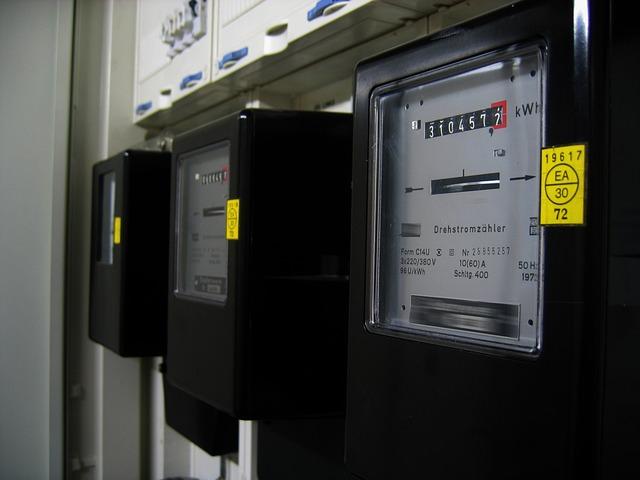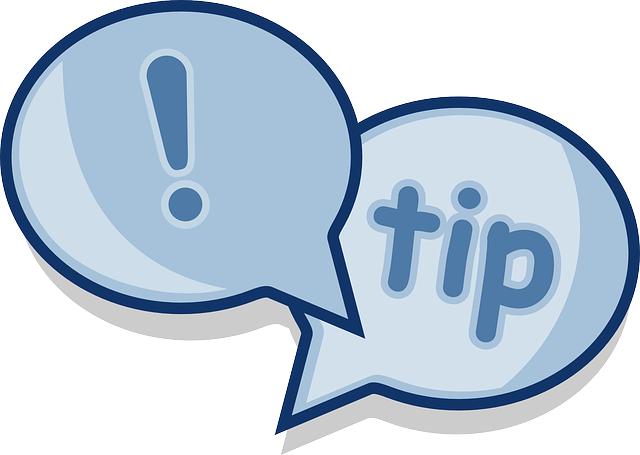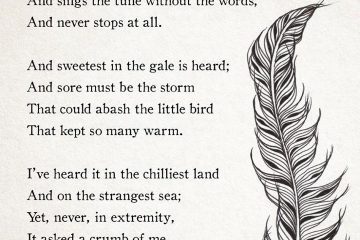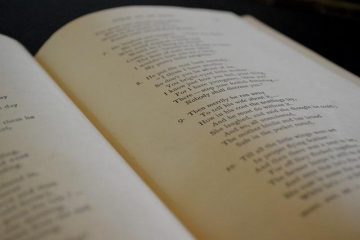Table of Contents
- Understanding the Basics of Poetry Meter
- Exploring Different Types of Metrical Patterns
- The Role of Meter in Enhancing Poetic Rhythm
- Practical Tips for Analyzing Meter in Poetry
- Creating Your Own Poetic Meter for Unique Impact
- Q&A
- In Retrospect


Understanding the Basics of Poetry Meter
At its core, meter is the rhythmic structure of a poem, providing a musical quality that enhances the reader’s experience. Comprised of patterns of stressed and unstressed syllables, meter is a fundamental aspect that distinguishes poetry from prose. The most common form in English poetry is the iambic meter, which follows an unstressed-stressed pattern. Other forms such as trochaic (stressed-unstressed), anapestic (unstressed-unstressed-stressed), and dactylic (stressed-unstressed-unstressed) offer poets a rich tapestry of rhythm to weave their verses.
Getting to know the basics of meter can dramatically change how one reads and writes poetry. A poem’s meter affects not only the sound but the emotion and meaning it conveys. Consider this brief list of common metrical feet used in poetry:
- Iamb (x /): “To ask or not to be“
- Trochee (/ x): “Double, double, toil and trech”
- Anapest (x x /): “And the sound of a voice“
- Dactyl (/ x x): “Everywhere”
The nuances of different meters can be appreciated when examining how they interact with content. For instance, Shakespeare’s use of iambic pentameter juxtaposes the natural flow of speech with the elevated language of his sonnets. Understanding the shifts in meter across stanzas or within lines often reveals shifts in a poem’s tone or focus. For instance, a switch from a regular iambic to an anapestic rhythm can emphasize a pivotal moment, drawing attention to a change in mood or setting.
Exploring Different Types of Metrical Patterns
The rhythm of a poem often hinges on its metrical pattern, where the arrangement of stressed and unstressed syllables creates the foundational beat. Iambic meter, perhaps the most recognizable, mirrors the natural cadence of English speech. It consists of an unstressed syllable followed by a stressed one, lending a graceful ebb and flow to the verses. This pattern, used extensively by Shakespeare, offers a familiar and almost musical quality that resonates across generations.
Beyond iambic, other meters add unique flavors to poetry. Trochaic meter, characterized by a stressed syllable followed by an unstressed one, provides a more pronounced and forceful rhythm. The reverse of iambic, it is frequently found in nursery rhymes where its lyrical nature engages young listeners. On the other hand, dactylic meter introduces a triplet rhythm—one stressed syllable followed by two unstressed syllables—offering a galloping pace that is energetic and often used to convey excitement or joy.
- Anapestic: Combines two unstressed syllables followed by a stressed one, creating a rising rhythm.
- Spondaic: Consists of two stressed syllables, often used to emphasize a word or phrase.
Exploring these various meters within poetry opens up a world of expressive possibilities. Consider how the metrical pattern influences the overall mood and tone. For instance, trochaic meter might imbue a work with a sense of urgency, whereas anapestic can lend a whimsical feel. Experimenting with different combinations can add layers of meaning, allowing poets to not only convey their narratives but also evoke specific emotional responses from their audience.
| Meter Type | Structure | Example |
|---|---|---|
| Iambic | Unstressed-Stressed | Today |
| Trochaic | Stressed-Unstressed | Garden |
| Dactylic | Stressed-Unstressed-Unstressed | Beautiful |
| Anapestic | Unstressed-Unstressed-Stressed | Understand |
| Spondaic | Stressed-Stressed | Heartbreak |


The Role of Meter in Enhancing Poetic Rhythm
Meter serves as the heartbeat of poetry, infusing it with a musical quality that transforms mere words into artful symphonies. At its core, meter is the pattern of stressed and unstressed syllables, bringing a distinct cadence and flow to verses. This carefully crafted rhythm not only aids memorization but also elevates emotional resonance. By varying meter, poets can create different moods—be it the galloping excitement of an anapestic trimeter or the calm, flowing pulse of an iambic pentameter. Such rhythmic variations allow a poem to dance or brood, aligning perfectly with its thematic undertones.
Despite its traditional roots, meter offers endless possibilities for innovative expressions in modern poetry. Contemporary poets often blend meters to break free from conventional constraints, experimenting with unexpected patterns that surprise and engage readers. These bold rhythmic choices can act as a form of rebellion, challenging readers to reconsider the relationship between form and content. Here’s where meter becomes a playground, inviting poets to craft more complex tapestries of sound. Think of it as a dialogue where each poet can imprint their unique voice through deviations and alignments with established metrical patterns.
- Iambic Pentameter: Often used in Shakespearean sonnets, comprises five feet per line.
- Trochaic Tetrameter: A lively, often bouncy meter, with four trochees in each line.
- Anapestic Trimester: Conveys a swift, galloping rhythm with its three feet per line.
| Meter Type | Syllabic Pattern |
|---|---|
| Iambic | Unstressed, Stressed |
| Trochaic | Stressed, Unstressed |
| Anapestic | Unstressed, Unstressed, Stressed |
| Dactylic | Stressed, Unstressed, Unstressed |
Meter is a powerful tool for poets aiming to cultivate both aesthetic and emotional depth. It acts as an unseen architect, framing how words move and capture the imagination. By intertwining meter with language, poets not only evoke feelings but also guide the reader’s physiological response to the poem—heartbeat quickens or steadies as rhythms shift. This dynamic interaction greatly enhances the reader’s experience, crafting a space where words and rhythm unite to touch upon the innermost human emotions.


Practical Tips for Analyzing Meter in Poetry
Understanding the rhythm of a poem often begins by studying its meter, which acts as the heartbeat of the lines. To dive deeply into a poem’s meter, start by identifying the type of foot used. Many poems use familiar patterns such as iambic, trochaic, anapestic, or dactylic. As you read, pay close attention to the syllabic structure of each line. Count the stressed and unstressed syllables, noting any deviations. Such variances often signal a shift in the poem’s tone or highlight particular emotions, adding layers of meaning.
Another practical approach is to annotate a poem visually. Use a system of marks to indicate stressed (/) and unstressed (u) syllables. For instance, in iambic pentameter, you will typically find a repeated pattern of one unstressed syllable followed by a stressed one. Draw a vertical line after each foot to compartmentalize the poem into manageable sections. This technique not only helps in recognizing patterns but also in visualizing the flow of the poem, crucial for understanding its rhythmical impact. Consider maintaining a glossary of meter terms as you analyze different poems, reinforcing your grasp of the poetic language.
| Poetic Foot | Pattern | Example |
|---|---|---|
| Iamb | u / | de-LIGHT |
| Trochee | / u | GAR-den |
| Anapest | u u / | inter-VENE |
| Dactyl | / u u | HICK-o-ry |
- Read Aloud: Vocalizing the poem can reveal natural rhythmic patterns, bringing meter to life.
- Compare Lines: Examine different lines to see how the meter complements the poem’s themes.
- Consult Verses: Look at other works by the same poet; many have a signature meter style.


Creating Your Own Poetic Meter for Unique Impact
Crafting your own poetic meter opens the door to an endless realm of creativity, allowing poets to tailor rhythm to the unique voice of their verses. Unlike traditional meters, which follow predictable patterns of stressed and unstressed syllables, designing a personal metric structure means prioritizing emotion and theme over established rules. Consider incorporating pauses and varied lengths within lines to emphasize certain emotions or break conventional expectations. This approach not only enriches the texture of your poetry but also invites readers to engage in a memorable reading experience, as each piece tells its own rhythmic story.
To begin, explore your intended emotional impact and how rhythm might enhance it. For instance, a serene, reflective poem might benefit from a slow, languid pace, whereas an energetic piece could thrive with rapid, unpredictable sequences. Here are a few ideas to experiment with:
- Combining long and short lines for dramatic effect
- Using strategic enjambment to maintain flow
- Incorporating repeated motifs for rhythmic consistency
Experimentation with custom metrics doesn’t always require complexity. Sometimes, simplicity imparts the greatest impact. To demonstrate how varied rhythm can enhance a theme, consider the following comparison of two metrics for conveying excitement:
| Metric Style | Effect on Reader |
|---|---|
| Short, rapid phrases | Heightened anticipation |
| Inconsistent beats per line | Unexpected twists |
These examples illustrate how varied rhythms can amplify the energy of your poem, transforming the reading experience into a dynamic and engaging journey. Customize your meter to reflect the ebb and flow of emotions within your verse, captivating your audience with a unique poetic signature.
Q&A
Understanding Poetry Meter: A Q&A Guide
Q1: What is poetry meter, and why is it important in poetry?A1: Poetry meter refers to the rhythmic structure of a poem, determined by the pattern of stressed and unstressed syllables in a line. Think of it as the poem’s heartbeat, guiding its flow and musicality. Meter is key because it enhances the emotional impact of a poem, creating a cadence that can emphasize certain feelings and themes. It’s the rhythmic foundation that helps a poem resonate with its readers.Q2: What are some common types of meter used in poetry?A2: The most common types of meter include iambic, trochaic, anapestic, and dactylic, often distinguished by their syllable patterns:- Iambic meter consists of an unstressed syllable followed by a stressed syllable (da-DUM), as in “return.”
- Trochaic meter flips this pattern to stressed-unstressed (DA-dum), as in “garden.”
- Anapestic meter includes two unstressed syllables followed by a stressed one (da-da-DUM), as in “underneath.”
- Dactylic meter is the reverse, with one stressed syllable followed by two unstressed (DA-da-da), as in “beautiful.”




0 Comments